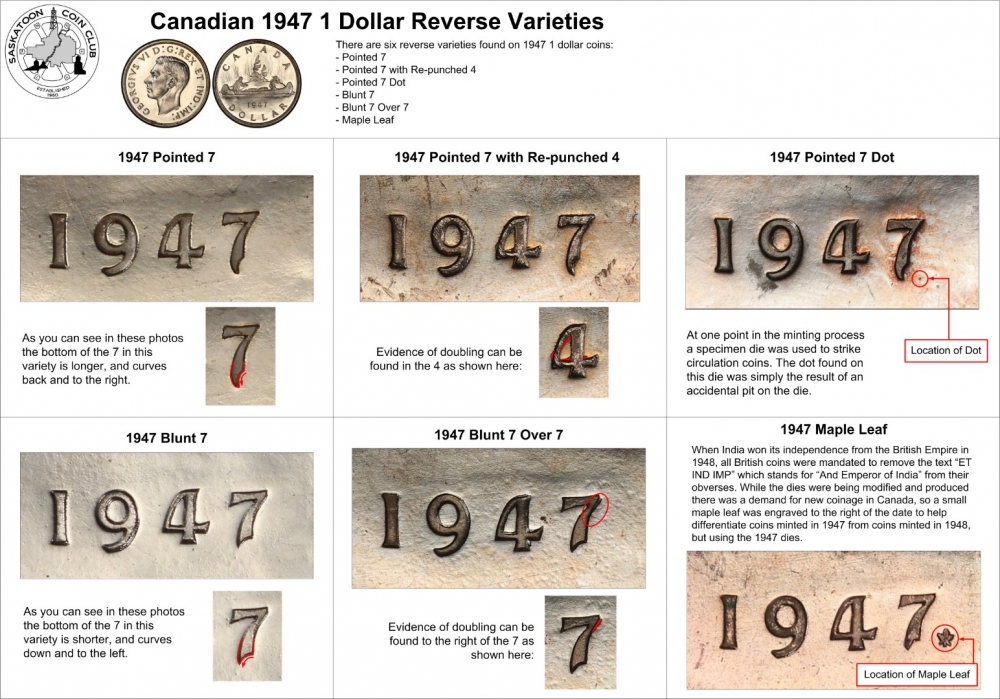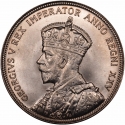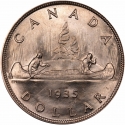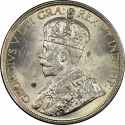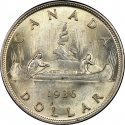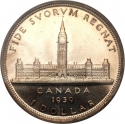You are about to finish your registration. Please check your mailbox (including spam folder). There should be a letter with a confirmation link. Check setting to make sure that your e-mail address is correct.
Send letter againDescription
In 1948, India was granted independence from the British Empire. Because of this, the words "ET IND IMP" (And Emperor of India) had to be removed from all obverse coin dies. There was a demand for new 1948 coins, but delays in the manufacture of the updated dies forced the Mint into a second production run using the 1947 dies. To differentiate regular 1947 coins from the second production run a small maple leaf was engraved to the right of the date on the reverse dies.
The Voyageur Dollar was a coin of Canada struck for circulation from 1935 through 1986. Until 1968, the coin was composed of 80% silver. A smaller, nickel version for general circulation was struck from 1968 through 1986. In 1987, the coin was replaced by the loonie.
Obverse

|
Bare head of George VI facing left, surrounded by the legend, an abbreviated translation of “George VI by the Grace of God, King and Emperor of India”. GEORGIVS VI D:G:REX ET IND:IMP: |
|---|---|
Reverse

|
Depicts a canoe containing a voyageur, or unlicensed fur trader, and an Indigenous man (aboriginal). The canoe also contains two bundles of furs—on one, the initials HB, for Hudson's Bay Company may be seen. CANADA |
| Edge |




